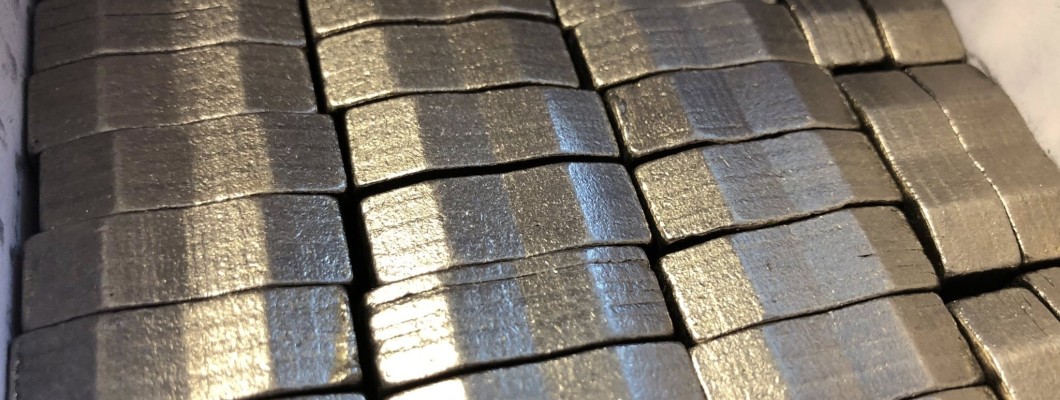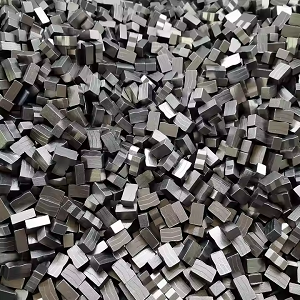
Diamond Tool Selection Process
1. Sintering Process Selection
As the temperature rises, the matrix densifies, leading to an increase in its flexural strength. Additionally, the flexural strength of the blank matrix and diamond segments improves with increased holding time, but eventually declines after reaching a peak. To meet performance standards, sintering at 800°C for 120 seconds is recommended.
2. Strength Selection
Excessive strength can make the diamond crystal difficult to break, resulting in polished abrasive grains during usage. This reduces sharpness and impacts tool performance. On the other hand, insufficient strength may cause the diamond to break easily under impact, leading to poor durability under heavy cutting loads. Therefore, a strength of 130-140N is ideal.
3. Grit Selection
Using coarse diamond grit with a uniform particle size creates sharp saw segments that offer high cutting efficiency. However, it reduces the flexural strength of the diamond agglomerate. A blend of fine and coarse grit or purely fine grit increases durability but reduces efficiency. A diamond grit size of 50/60 mesh is recommended for balance.

4. Binder Selection
For softer materials like marble, which has relatively low mechanical properties, a copper-based binder is suitable. Although copper-based binders have a lower sintering temperature and offer lower strength and hardness, they provide higher toughness and better bonding. To improve strength, hardness, and bonding, tungsten carbide (WC) or W2C is used as the skeleton material with a small amount of cobalt. Additionally, metals with low melting points and hardness, such as Cu, Sn, and Zn, are added as binders. It is important that the particle size of the main additive is finer than 200 mesh, and that of additional additives is finer than 300 mesh.
5. Diamond Distribution Concentration Selection
Increasing diamond concentration from low to high results in a gradual reduction in the saw blade's sharpness and cutting efficiency, while its lifespan increases. However, excessively high concentrations can cause the blade to dull. A lower concentration, combined with a coarser particle size, improves efficiency. Different concentrations can be used in different layers to optimize performance, with a lower concentration in the center to form a middle groove, which helps prevent blade swaying during use.

Leave a Comment